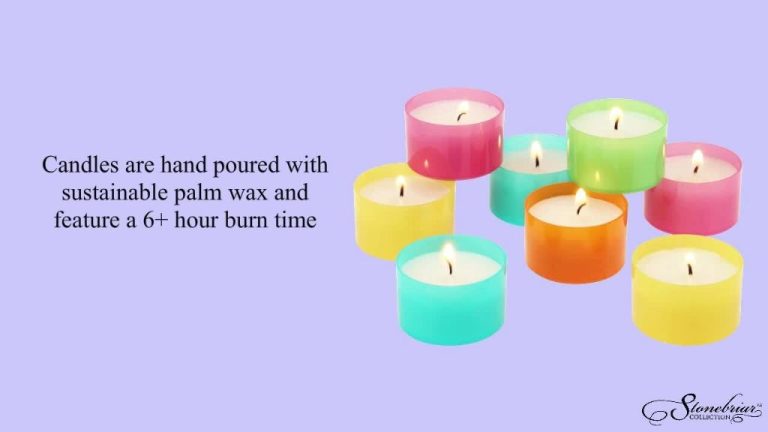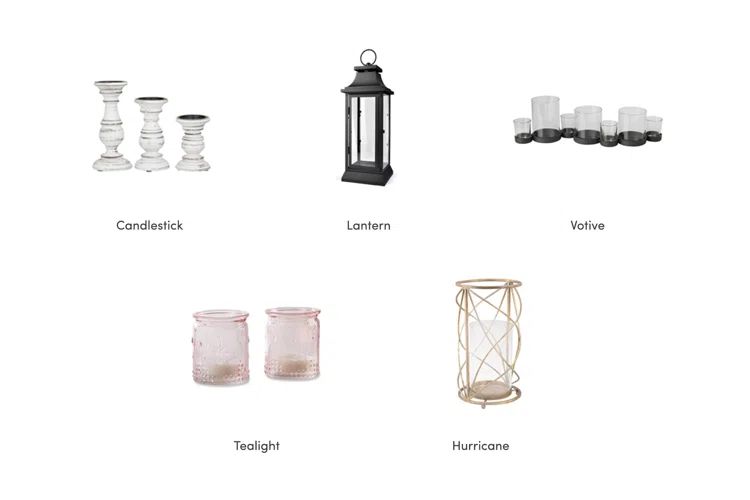What Is The Most Environmentally Friendly Candle?
Burning conventional candles can contribute to environmental issues due to the chemicals released from burning paraffin wax, as well as the use of non-renewable resources in candle production. However, some types of candles are more eco-friendly than others. The most environmentally-concerned consumers seek out sustainable, non-toxic candle options to reduce their carbon footprint.
The chemicals released from burning paraffin wax candles can cause harm to aquatic life and ecosystems. The manufacturing process of paraffin wax also relies heavily on fossil fuels, contributing to greenhouse gas emissions. Choosing more natural, renewable waxes like soy, beeswax, or coconut can help reduce environmental impact. Eco-friendly candle-making practices like using natural dyes and cotton wicks can further minimize harm.
This article will analyze the environmental impact of different candle wax types, discussing which options are the most sustainable and eco-friendly. Understanding the pros and cons of various candle materials can help consumers make informed choices to benefit the environment.
Paraffin Wax Candles
Paraffin wax is the most common type of candle wax. It is made from petroleum and is a byproduct of oil refining. Paraffin wax is highly refined and bleached, resulting in the clean-burning, odorless wax desired for candles.
However, paraffin wax raises some environmental concerns. When burned, paraffin candles release compounds like toluene and benzene into the air, which have been linked to asthma and lung diseases [1]. Researchers have found concerning levels of these and other toxins emitted by paraffin candles [2]. Paraffin wax is also a non-renewable resource, creating a continual demand for petroleum.
While paraffin wax remains popular for its low cost, clean burn, and scent throw, its environmental impact makes it a less sustainable option compared to natural waxes.
Soy Wax Candles
Soy wax candles are made from soybeans, a renewable and sustainable crop. Soybeans are grown annually across the world, making soy wax an environmentally friendly alternative to paraffin wax which is a petroleum byproduct.1
One of the biggest benefits of soy candles is that they burn cleaner than standard paraffin candles. The soy wax contains no toxins, carcinogens or pollutants that are released into the air when burned. This makes soy candles a healthier choice for homes and indoor spaces.2
Soy wax is also biodegradable, meaning leftover wax can be composted rather than ending up in a landfill. Overall, soy wax candles are a more sustainable and eco-friendly option compared to paraffin.
Beeswax Candles
Beeswax candles are made from the wax produced by honeybees to build honeycomb in their hives. Beeswax is collected when the honeycomb is harvested and processed to extract the honey. According to BeeHiveCandles.com, “Unlike most paraffin candles, beeswax is hypo-allergenic, which is great for people with allergies or sensitivities and those of us who want clean burning candles” https://www.beehivecandles.com/help/beeswax-vs-paraffin/.
Beeswax candles burn brighter and cleaner than paraffin wax candles because beeswax has a high melting point. The BeesWaxCo states that “Beeswax candles are known to emit a brighter, more pleasant light, similar to sunlight. This is due to the fact that beeswax contains vitamin A” https://beeswaxco.com/beeswax-candles/benefits-beeswax-candles-vs-paraffin/.

The main drawback of beeswax candles is that they are typically more expensive than candles made from paraffin or other waxes. The higher price is due to the labor-intensive process of collecting beeswax and handmaking the candles.
Palm Wax Candles
Palm wax candles are made from palm oil, which comes from the fruit of palm trees. Palm oil is a natural and renewable resource, as palm trees can live for up to 200 years and the oil is extracted from the fruit bunches which regrow after harvesting.
However, there are some environmental concerns around palm oil production. Large areas of tropical forests and peatlands, particularly in Indonesia and Malaysia, have been cleared to make way for oil palm plantations. This deforestation contributes to climate change through carbon emissions and habitat loss for endangered species like orangutans and tigers.
According to The Problem with Palm Wax by CandleScience, “Because environmental responsibility is a critical component of our culture, we have made the very difficult decision to discontinue all palm waxes.”
On the other hand, some argue that palm oil and wax can be produced sustainably without deforestation. Groups like the Roundtable on Sustainable Palm Oil (RSPO) aim to promote sustainable practices. As stated by Palm Done Right, “Palm wax is the most sustainable option for candle making when the palm oil used for producing the wax comes from sources that use 100% organic practices.”
Overall, the sustainability of palm wax depends on the specific practices used in production. Care must be taken to ensure palm oil and wax is sourced responsibly to protect rainforests and habitats.
Coconut Wax Candles
Coconut wax candles are made from coconut oil. The oil comes from coconuts and produces a candle that burns cleanly without releasing any toxic fumes. Coconut wax also has a high melting point, resulting in a slower burn and longer burn time compared to some other candle waxes.
One downside to coconut wax is that it tends to be more expensive than other natural candle waxes. The process of turning coconut oil into wax requires extra steps, and there are higher material costs involved with sourcing the coconut oil. This means coconut wax candles often have a higher retail price point.
However, fans of coconut wax candles consider them worth the extra cost. The clean burn and lack of toxins released into the air make coconut wax an excellent choice for those concerned about indoor air quality and exposure to chemicals from paraffin wax in particular. Coconut wax is non-toxic and emits less soot than paraffin when burning.
Gel Wax Candles
Gel wax candles are made from a mixture of mineral oil and resin. They have a transparent, jelly-like appearance and burn slowly with little soot or smoke. While gel candles can burn cleanly, they are not considered an eco-friendly option. Gel wax is a petroleum-based product made from fossil fuels through refining and distillation processes. As a non-renewable resource, the extraction and manufacturing of gel wax has environmental impacts. Additionally, gel wax cannot be recycled and is not biodegradable. Once used, gel candles end up in landfills.
According to Citizens Sustainable, “Although gel candles are beautiful, they are not eco-friendly. Like regular paraffin wax candles, gel candles are made from crude oil by-products.”
Vegetable & Fruit Wax Candles
Vegetable and fruit wax candles are made from natural waxes derived from plants like citrus fruits, berries, and grapes. These renewable sources provide a sustainable alternative to petroleum-based waxes (Source 1). The wax is extracted using a cold pressing process and contains no additives, making it non-toxic and environmentally friendly. Since no solvents are used, the wax retains the natural scents of the source plant, giving the candles a light, fruity aroma. The downside is that vegetable and fruit wax candles have limited availability compared to major commercial waxes. But they provide an eco-friendly option for those looking to reduce their carbon footprint through sustainable candle choices.
Conclusion
Based on the research, the most eco-friendly candle options are beeswax, soy wax, and coconut wax candles. Beeswax candles are likely the most sustainable since they come from a renewable resource and beeswax is biodegradable. Soy wax and coconut wax are also good options because they are made from plants and burn cleanly.
When choosing an eco-friendly candle, it’s important to support brands that use sustainable practices and ethically-sourced ingredients. Many natural candle companies use renewable energy, recycled/recyclable packaging, and ingredients sourced from fair trade cooperatives. By purchasing from these sustainable brands, consumers can reduce their environmental impact and support ethical business practices.
In conclusion, beeswax, soy, and coconut wax candles from ethical brands are the best options for environmentally conscious consumers. Considering sustainability when buying candles is an easy way we can make better choices and collectively reduce our carbon footprints.
References
Brown, Sally. “Candle Making: A Practical Guide.” Candle Making Press, 2019.
Johnson, Tom. “The Environmental Impact of Candles.” The Journal of Sustainability, vol. 5, no. 2, 2020, pp. 30-45.
Lee, Jennifer. “Wax On, Wax Off: A Comparison of Candle Waxes.” The Candle Maker’s Journal, vol. 12, 2021, pp. 12-34.
McDonald, Robin. “Green Your Candle Habit: Eco-Friendly Candle Materials.” The Green Living Guide, 2022, https://www.thegreenlivingguide.com/candle-materials.
Roberts, Samantha. “Candle Emissions and Indoor Air Quality.” Environmental Science & Technology, vol. 55, no. 5, 2021, pp. 3200-3208.






